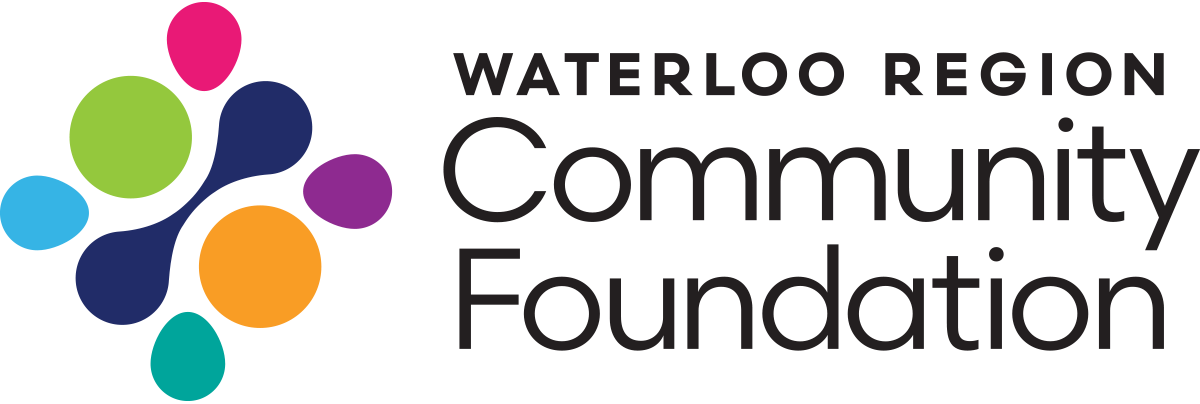Blog: Finding Our Place in a Growing Region
I’m a little bit overwhelmed today.
I’m overwhelmed by the number, breadth, and depth of On the Table conversations that took place June 7-9 across Waterloo Region. I am grateful to the hosts of all 53 of those conversations. We hope you enjoyed connecting with your friends, colleagues, neighbours, partners, and people in the community. We’ll be collecting feedback in the coming weeks to create a community-wide report which we’ll share via this newsletter later in the summer.
Interestingly, 27 of the conversations were held in Kitchener, 14 in Waterloo, seven in Cambridge, two in North Dumfries, two in Woolwich, and one in Wilmot. WRCF team members attended 35 of the conversations; I personally made it to six of them. The variety of topics was staggering, the passion community members have for this place is inspiring, and the ideas shared about social infrastructure have our minds spinning.
I’m also overwhelmed as the need for social infrastructure was brought into stark focus in another way. We continue to update our 2023 Waterloo Region Vital Signs® on affordable housing as new data becomes available. Our lead researcher recently sent us a chart that set me back on my heels.
Kitchener-Cambridge-Waterloo CMA. Note: Housing starts are calculated for the entire year; Population estimates are for July 1st each year, and the most recent data are estimates and may be revised. Source: Statistics Canada Annual Population Estimates and CMHC Housing Completions. Analysis by Steven Ayer.
I was overwhelmed to see how the population of Waterloo Region continues to rapidly expand while the number of housing starts continues to decline. This staggering mismatch explains how those coming to this community are finding it harder and harder to find a place to live. Having a place to call home is an important part of building community connections, trust, and well-being. As the brick-and-mortar, physical framework of our community rapidly expands, so must a sense of belonging exist at an equal pace. That thriving place of connection is, after all, where the beating heart of community development is found.
The Reception House Art Program gives newcomer youth a platform to express themselves, their concerns and their dreams about their lives in our region. Many of the youth face unique challenges. Many of them have questions about school, and whether they will be in the same grade they were in their original country, will they have friends (like they did) and will they be able to succeed - and all that revolves around finding housing. Having the Art Program helps them express those concerns. Art is a good avenue because Art is a universal language. Even though most of the youth aren’t fluent in English, they can send a message, and share hopes, concerns and ideas with others. As the saying goes; a picture is worth 1000 words, and I will add that the 1000 words are in a universal language that everybody can understand and relate to.
— Mohammed Saeed, Youth Support Facilitator at Reception House
One real-time example of that critical social infrastructure comes from Reception House Waterloo Region, an organization that supports government-assisted refugees. The recent ‘Finding Our Place: A Journey Home’ art exhibit is a platform for newcomer youth to share and express their encounters — from hardships to successes — through self-portraits, collages, drawings and sculptures. The project was displayed prominently at Kitchener’s City Hall throughout May and there are plans for the exhibit to travel across the region to showcase the work.
Reception House’s New Canadian Art Program was founded by talented visual artist and muralist Pamela Rojas, for children and youth ages six to 19 who have settled in Canada with their families. It allows refugee participants space to explore their lives and experiences.
The Art Program for youth at Reception House can significantly enhance social infrastructure by utilizing community spaces and facilities to foster creativity, social interaction, cultural representation, and personal development. By integrating art programs into various facets of social infrastructure, communities can provide enriching experiences for youth that support their development and well-being. These programs and partnerships help create inclusive and vibrant communities where young people can thrive. By embedding the youth art program within the existing social infrastructure, we can create more opportunities for young people to engage in the arts and contribute positively to our community. — Pamela Rojas, Visual Artist
Before viewing the exhibit, I wasn’t aware that newcomer children and youth in transitional housing are often ineligible to attend school without a permanent address. It is hard to be in limbo, waiting for your new life to begin - waiting for a home. Having this program during this time of transition provides the opportunity for youth to visualize what their future will be like in their new community, and an opportunity to make connections with other youth in a non-traditional setting that starts to help them build up self-esteem and think about their future.
For young people trying to adapt and find their footing in an unfamiliar environment, the stresses are immense and complex. Integrating through art allows for a bridge to understanding, trust and inclusion. And until we’re able to build sufficient housing for those arriving in our community, building that understanding, trust, and inclusion will be even more daunting.
That said, we’re up for the challenge. After spending a weekend in conversations across the region, I know others are too.
Eric Avner
WRCF President & CEO
eric@wrcf.ca


